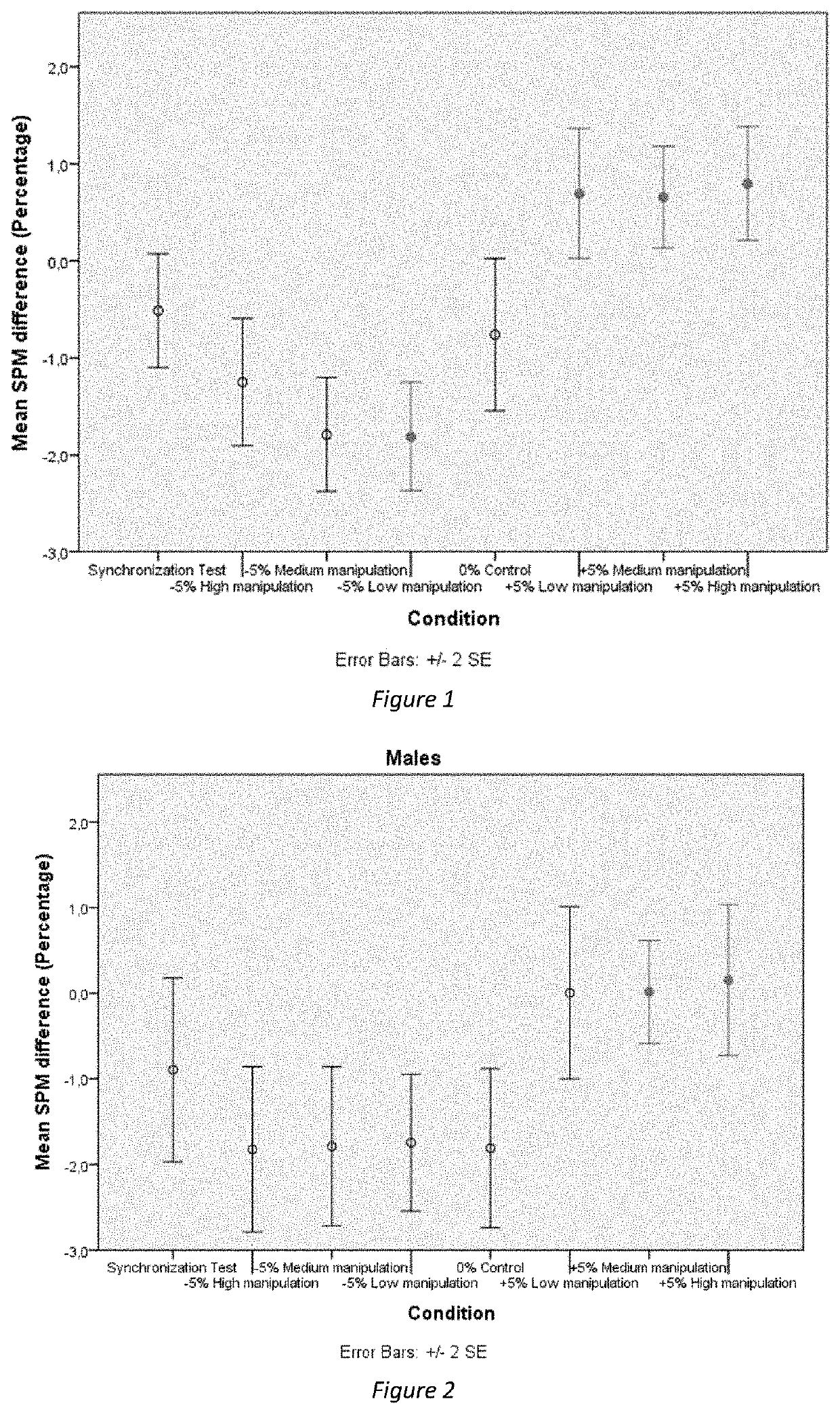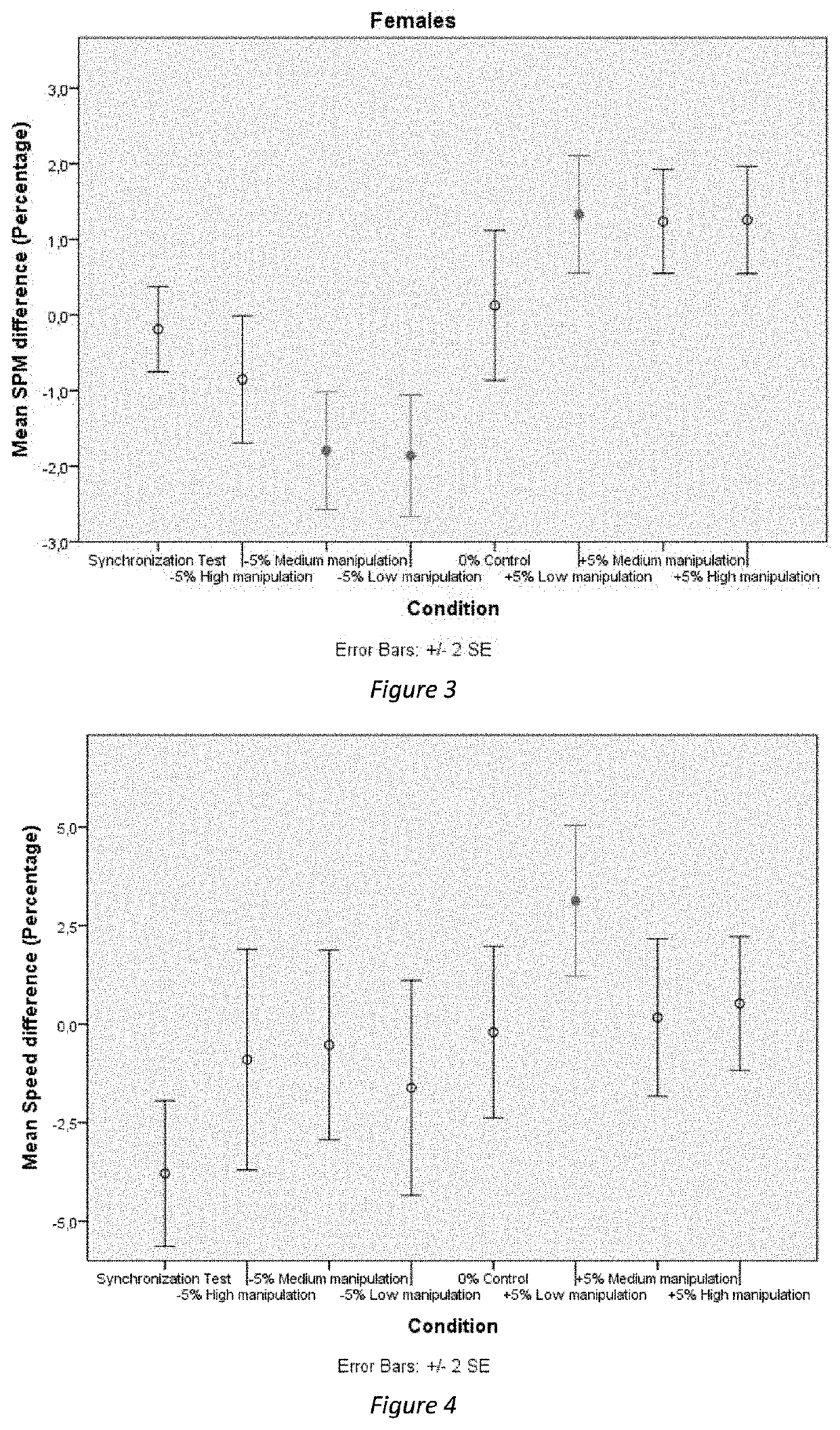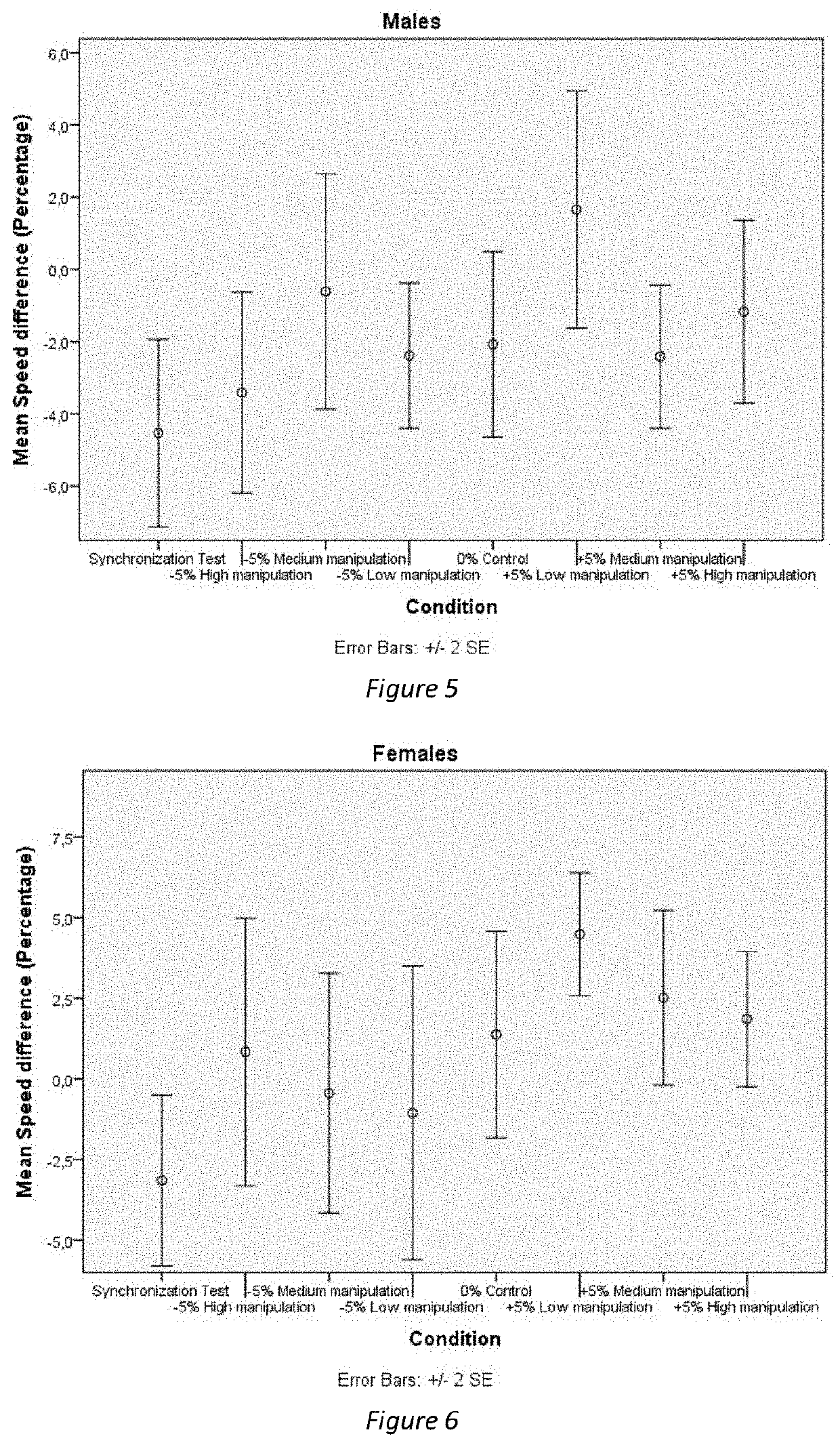Mobile system allowing adaptation of the runner's cadence
- Summary
- Abstract
- Description
- Claims
- Application Information
AI Technical Summary
Benefits of technology
Problems solved by technology
Method used
Image
Examples
Embodiment Construction
[0003]The general aim of the BeatHealth project is to use the training capacities of the music to improve the kinematic parameters of the race in amateur athletes or those of walking in the Parkinsonian patient.
[0004]The tempo of most traditional musical compositions lies in an interval that includes the tempo of human locomotor activities, running or walking. In addition we have the ability to synchronize our movements with the pulsations of music, i.e. the accent intervening cyclically at the beginning of each musical time. So we took advantage of this ability to manipulate the cadence or tempo of the runner.
[0005]Making music at a specific tempo and asking the runner to synchronize in order to change his pace was not the aim: it would have led to assigning a double task to the runner, running and synchronization. On the contrary, we sought the parameters of music manipulation likely to engage the runner in a subliminal adaptation of his cadence. It is an adaptive system that has ...
PUM
 Login to View More
Login to View More Abstract
Description
Claims
Application Information
 Login to View More
Login to View More - R&D
- Intellectual Property
- Life Sciences
- Materials
- Tech Scout
- Unparalleled Data Quality
- Higher Quality Content
- 60% Fewer Hallucinations
Browse by: Latest US Patents, China's latest patents, Technical Efficacy Thesaurus, Application Domain, Technology Topic, Popular Technical Reports.
© 2025 PatSnap. All rights reserved.Legal|Privacy policy|Modern Slavery Act Transparency Statement|Sitemap|About US| Contact US: help@patsnap.com



